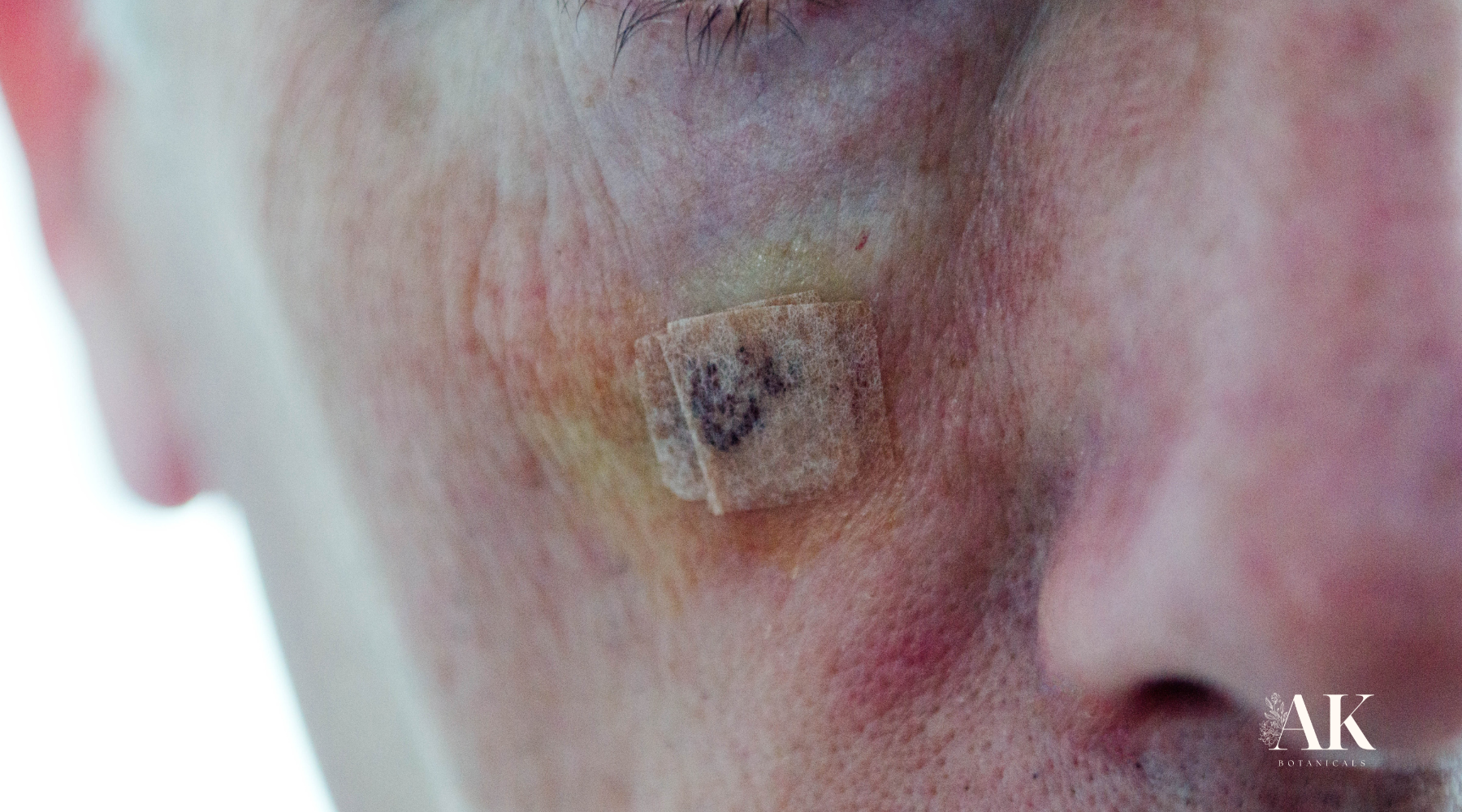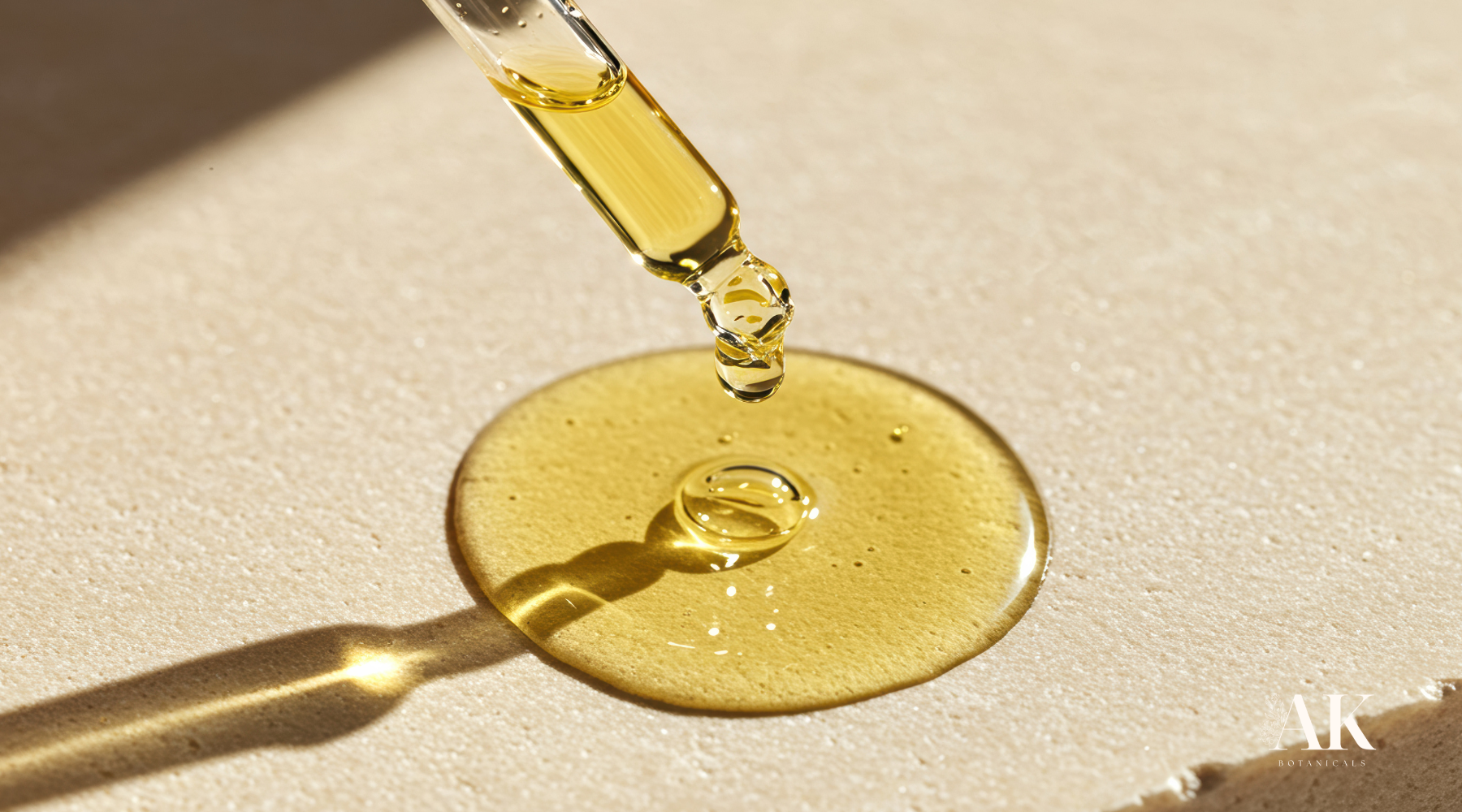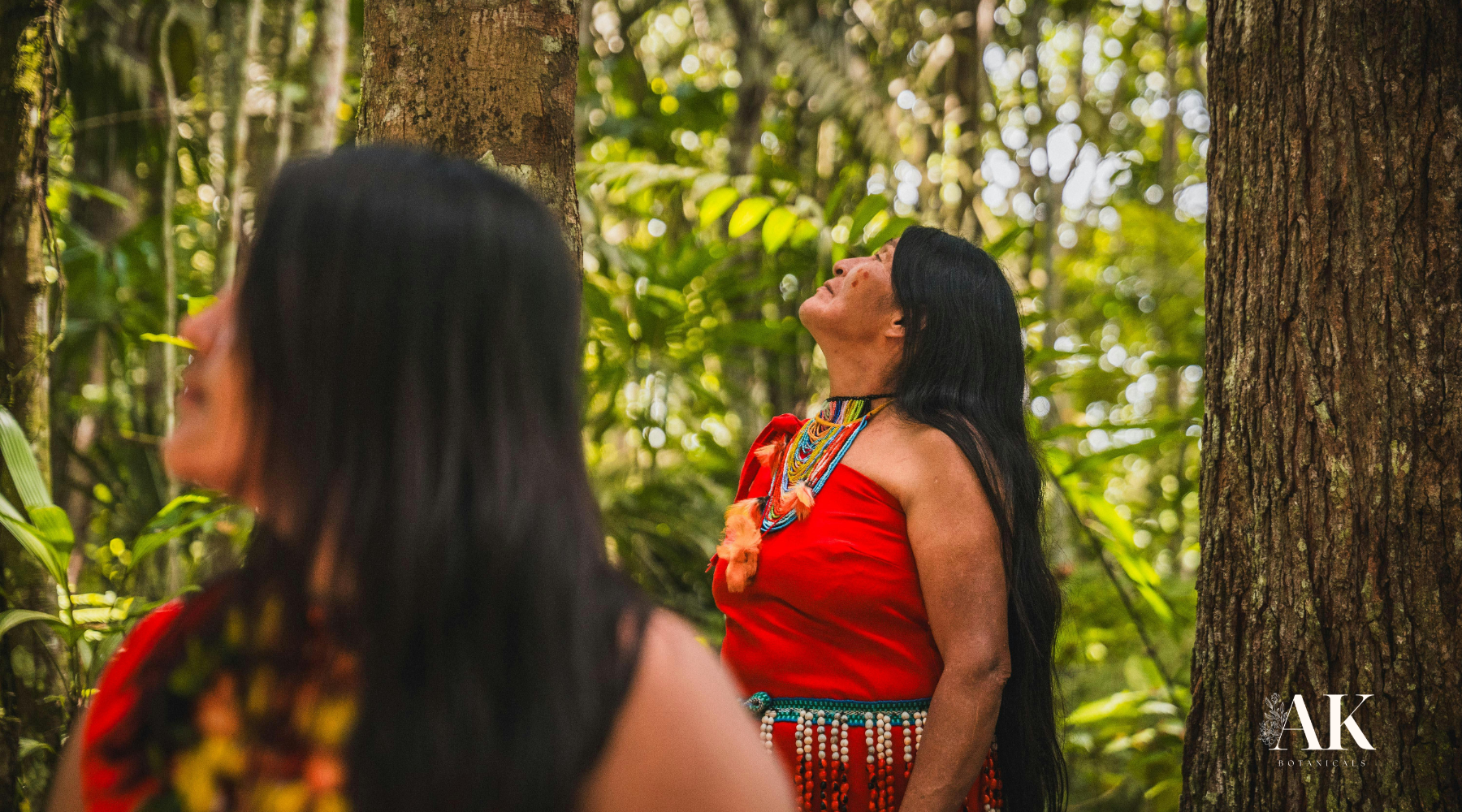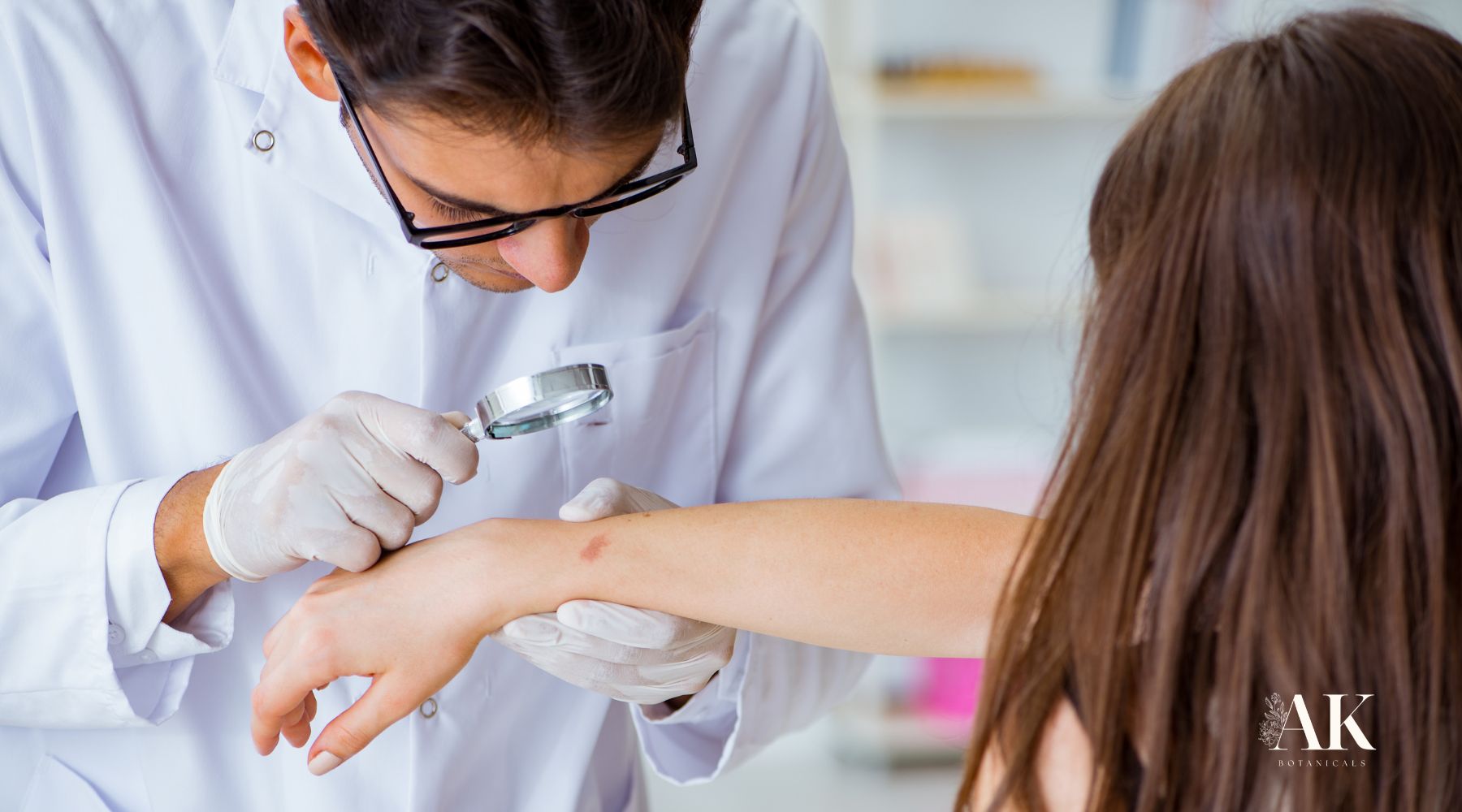
What Does Actinic Keratosis Look Like? How to Spot the Early Warning Signs
Actinic keratosis, a common skin condition, presents itself as rough, scaly patches that often appear on sun-exposed areas like the face, ears, lips, and forearms. Recognizing these early signs is critical in preventing progression to more severe skin issues. Early recognition is vital to prevent complications like skin cancer.
Actinic Keratosis Key Highlights
- Actinic keratosis manifests as rough, scaly patches, often appearing on sun-exposed areas such as the face, ears, and forearms.
- Understanding the subtle visual clues of actinic keratosis is key for early medical intervention and management.
- Recognizing the link between actinic keratosis and potential skin cancer emphasizes the importance of timely medical consultations.
- Incorporating botanical skincare like AK Botanicals enhances the skin's resilience.
- An integrated actinic health plan includes sun protection and regular skin checks alongside natural skincare solutions.
Recognizing the Early Signs of Actinic Keratosis
Understanding the initial indications of actinic keratosis is crucial for early intervention and effective management. By identifying these common visual indicators, you can take proactive steps to address potential concerns with informed medical guidance.
Common Visual Indicators of Actinic Keratosis on Your Skin
Actinic keratosis often presents itself as rough, scaly patches on the skin, a typical indicator that a closer examination is warranted. These scaly patches can feel like sandpaper and are frequently mistaken for simple, benign changes. Typically, these spots appear in areas that have been subjected to prolonged sun exposure, including the face, ears, neck, and the back of the hands. One may notice these areas as red, pink, or brownish spots which can vary significantly in size and shape, adding to their deceptive nature as they blend into the natural tones of your skin.
The gradual progression of these keratoses is another layer to consider when assessing skin health. Often starting as subtle blemishes, they can grow into more pronounced spots. In some cases, the spots may become raised, forming a small, rough, wart-like structure. These changes are signs that should prompt an immediate consultation with a healthcare professional to evaluate the potential risk and appropriate management of the condition.
In addition to being a tactile issue, these keratoses may occasionally cause discomfort, with some individuals reporting a prickly or itchy sensation over the affected area. The importance of these symptoms cannot be overstated, as they often serve as an early warning signal that the skin is reacting to sun damage. For individuals aged 45 to 65, especially those with a history of extensive sun exposure, recognizing these symptoms is crucial in an actinic skin care routine to halt potential progression to more serious conditions.
By maintaining vigilant skin surveillance and knowing what signs to look for, you can better manage these visual indicators. Products developed by AK Botanicals are designed to help support your skin through nourishing botanical ingredients tailored to address actinic challenges. Our holistic approach ensures your skin receives the care it requires while supporting you in maintaining its health and appearance.
The Link Between Actinic Keratosis and Skin Cancer
By understanding how actinic keratosis can progress to more serious conditions like squamous cell carcinoma, you can make informed decisions about your skin health.
Understanding the Risks and When to Seek Medical Advice
Actinic keratosis, although appearing initially as benign skin lesions, carries a notable risk of progression to squamous cell carcinoma, a common form of skin cancer. This transformation is significant, given that squamous cell carcinoma can be aggressive, especially if not diagnosed early. As such, it is imperative for individuals, particularly those aged 45 to 65, to understand the risk factors associated with actinic keratosis and when to seek medical intervention. Factors that increase the risk of actinic keratosis progressing into skin cancer include prolonged sun exposure, especially without adequate protection, fair skin, a history of sunburns, and an advanced age.
It's critical to monitor the warning signs, such as changes in the color, size, and texture of existing keratoses, as these can indicate an increased risk of cancer development. And, if there's any bleeding or an ulceration on the keratosis, make sure to seek immediate evaluation by a healthcare provider.
Consulting a healthcare provider can provide personalized information on your skin condition, allowing for proactive management. A doctor can perform a thorough examination and, if necessary, a biopsy, to determine if a lesion is pre-cancerous or has transformed into carcinoma.
Early detection through these methods is crucial; it significantly enhances the effectiveness of treatment and reduces the risk of further complications. For those already practicing vigilant skin care, especially those incorporating AK Botanicals’ products, noting any persistent or unusual changes in your skin is vital.
Our botanical skincare line is designed to complement traditional medical advice by removing sun damage before it can advance to skin cancer, yet professional medical evaluation remains the cornerstone for addressing any serious concerns. Understanding when and why medical advice is crucial empowers you in managing actinic keratosis effectively and reducing the potential risk of skin cancer.
Spotting the Less Obvious Warning Signs of Actinic Keratosis
If you are living with or at risk of actinic keratosis, spotting the less obvious signs can often be as vital as recognizing more overt symptoms. Actinic keratosis doesn't always present itself in glaringly obvious ways, making it one of those skin conditions where awareness is your first line of defense. While the most common visual signs involve rough, scaly patches, subtler signs can be easily dismissed or misinterpreted.
Sometimes, actinic keratosis manifests as tiny, flesh-colored papules that might not immediately raise concerns. These almost invisible warning signs can blend seamlessly into the skin, often mistaken as harmless blemishes or ignored outright.
It's important to consider touch sensitivity as well. When you run your fingers over these spots, they might feel rougher than the surrounding skin, even if they don't visually stand out. This tactile difference can be a pivotal warning sign, signaling sun damage before it becomes more problematic. Besides, the sensations around these areas should not be overlooked.
You may experience subtle itching or a prickling sensation, which might seem trivial but may indicate actinic keratosis development. Our holistic approach at AK Botanicals encourages paying attention to these tactile cues, offering products designed to address these early sensory symptoms effectively.
Understanding the color variations can help in early identification. Not all actinic keratosis is limited to the reddish or brownish spots you're familiar with. Some lesions can take on a pale or yellowish tint, particularly on thicker areas of skin like the scalp. This variation implies that a broader color palette should be considered when self-examining your skin for signs of this condition.
During assessment, a change in how these spots or lesions look over time could indicate a need to consult with a dermatologist, as they are crucial indicators of progression that can necessitate medical intervention.
Incorporating routine checks into your skincare regimen is another proactive measure we advocate for at AK Botanicals. Take note of any sudden changes or discomfort, even if it's just a small area of concern.
Understanding the visual symptoms of actinic keratosis is crucial in ensuring early detection and treatment. Recognizing these warning signs allows you to take proactive steps toward skin health, leveraging both medical advice and holistic skincare approaches like those offered by AK Botanicals.
Prioritize regular skin examinations and consult healthcare professionals when necessary. By integrating botanical solutions into your routine, you can support your skin’s natural resilience and maintain its health. Stay informed, stay proactive, and protect your skin with care and compassion. Explore our resources for more guidance on nurturing your skin.




